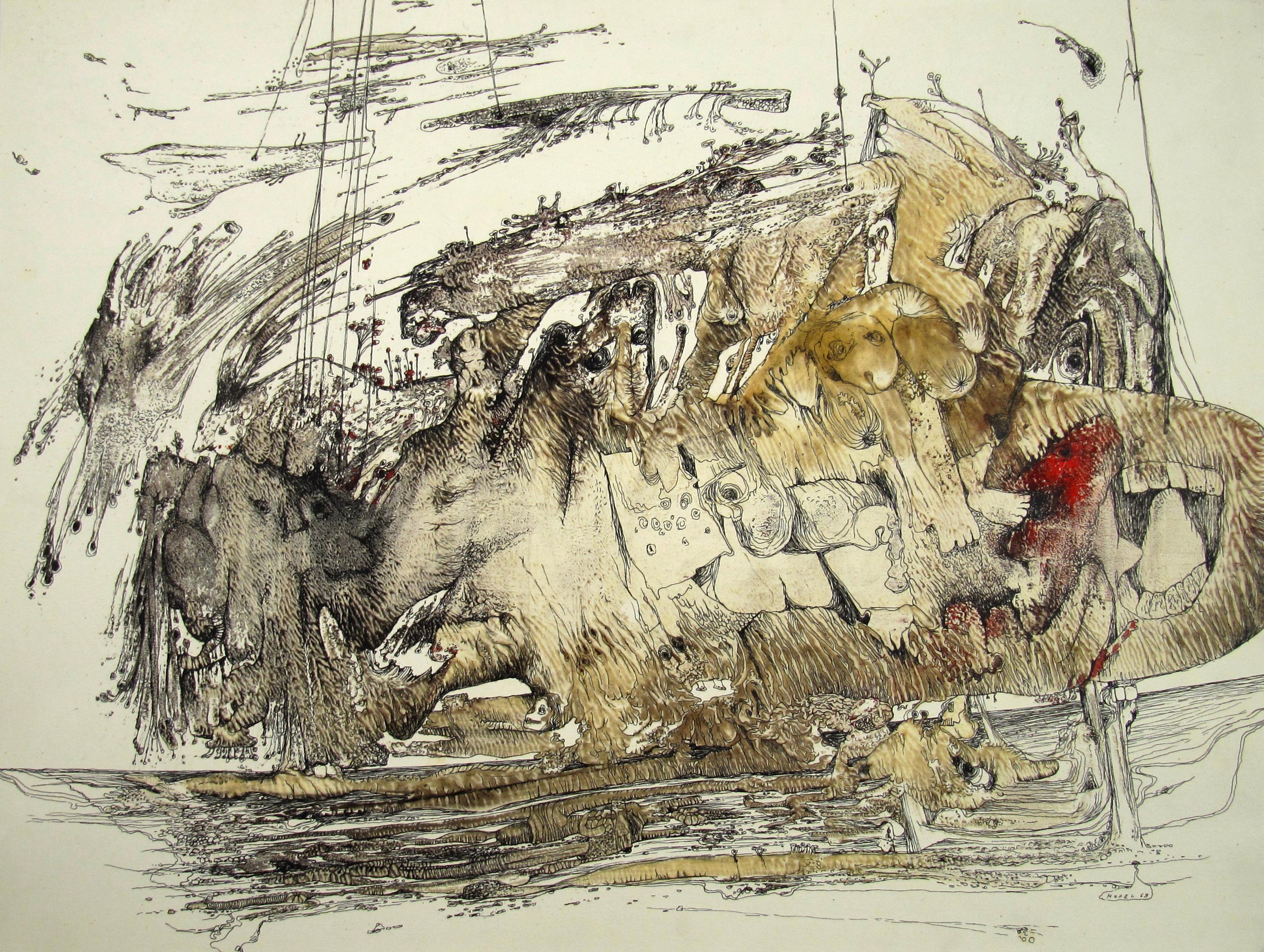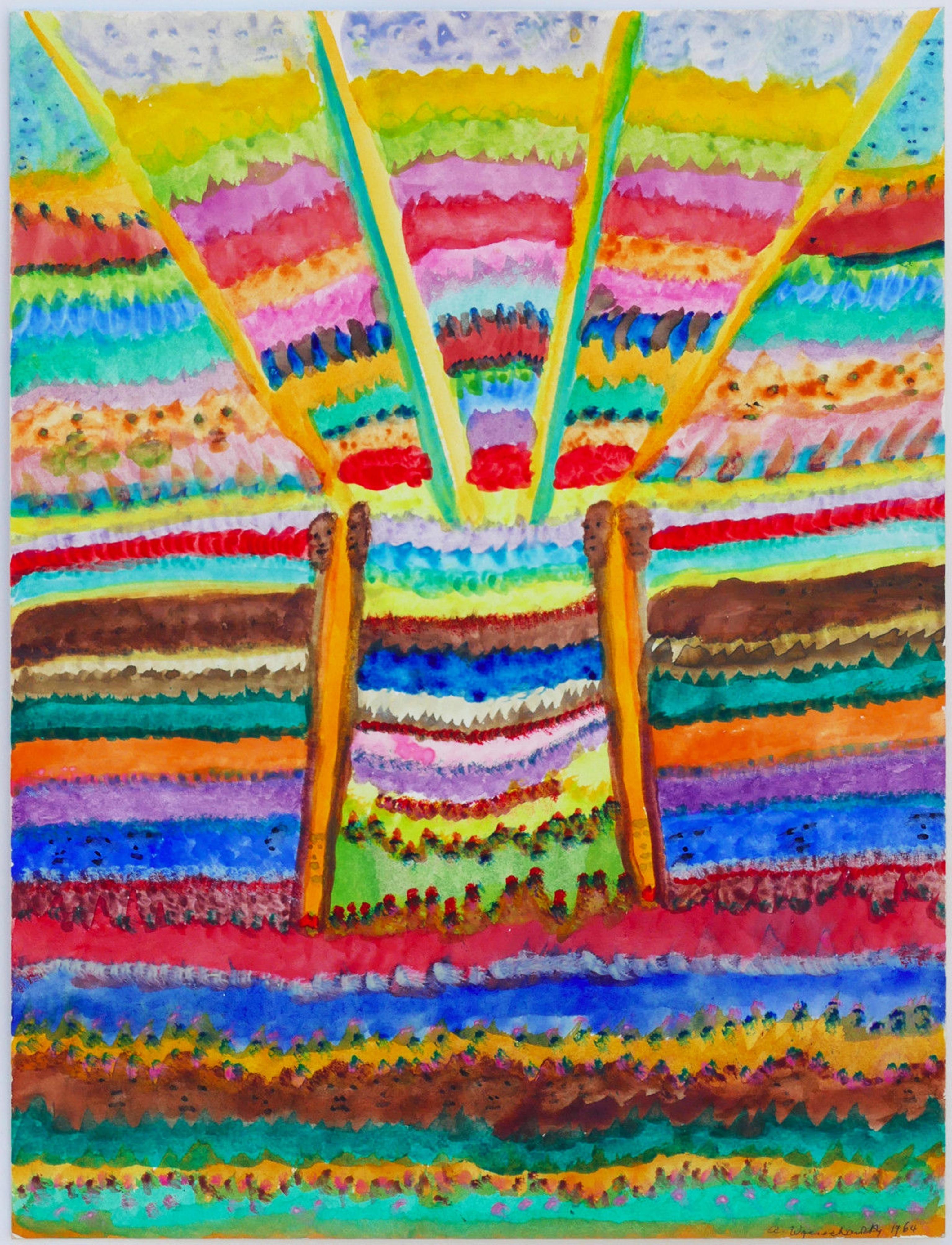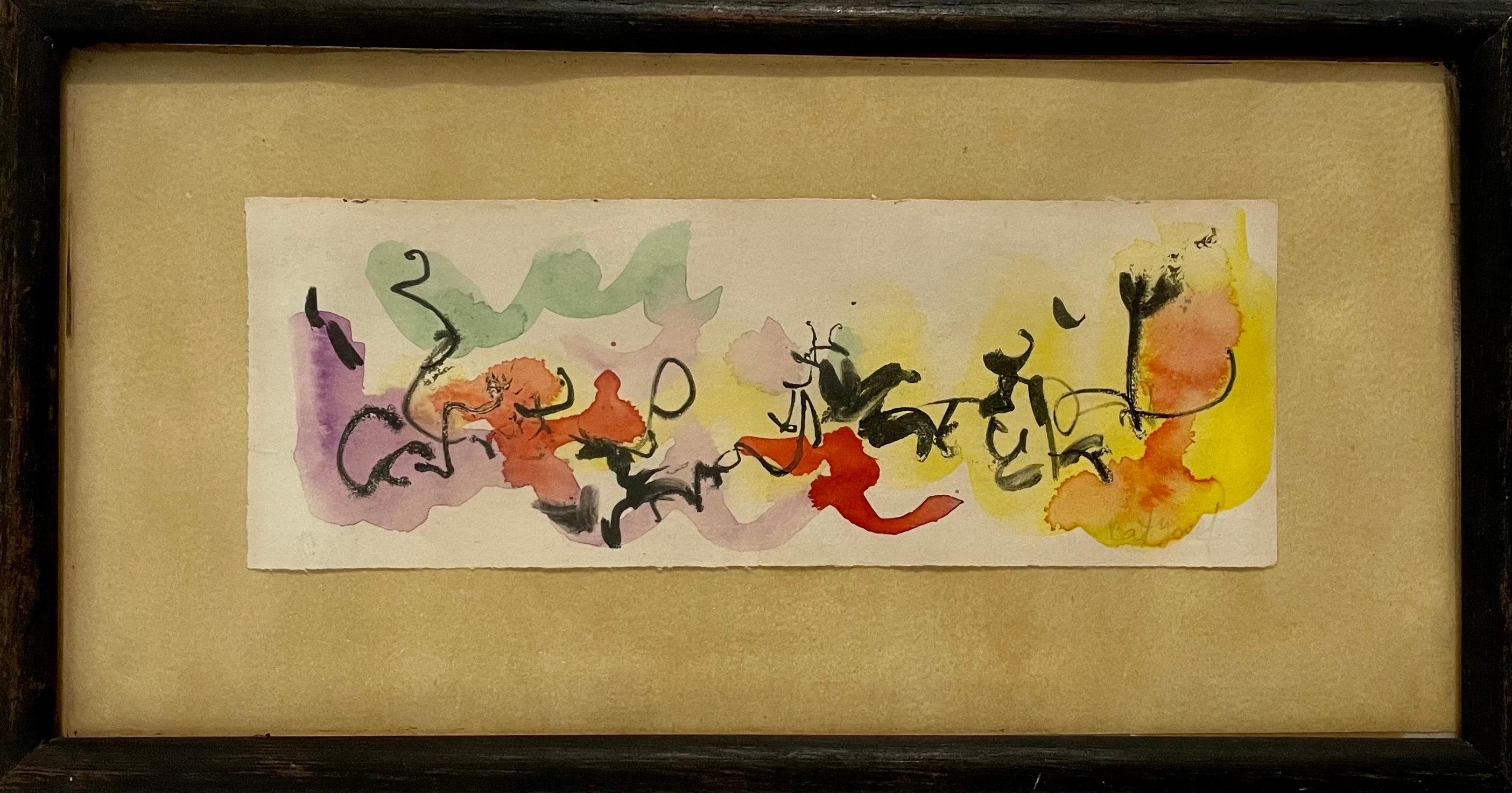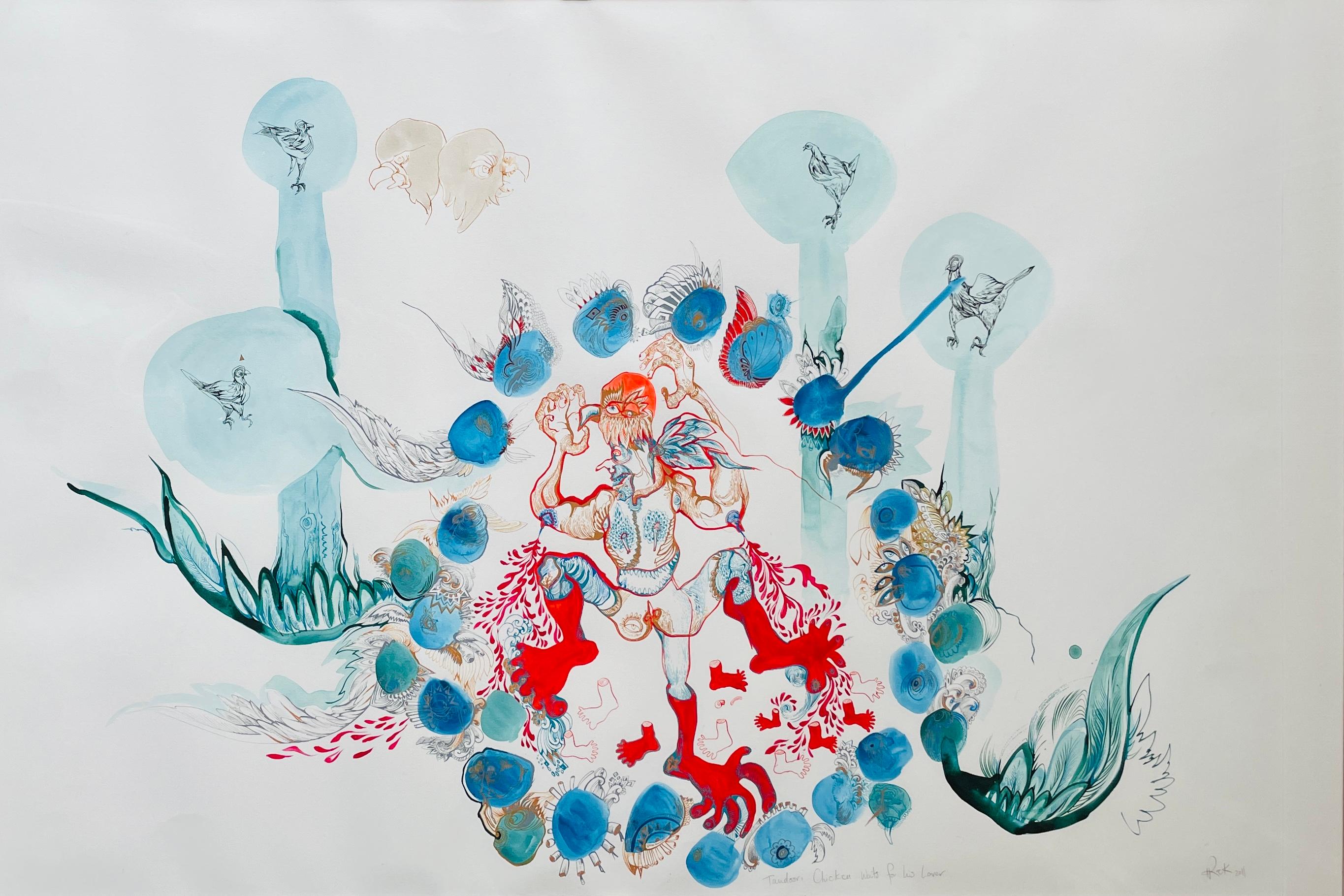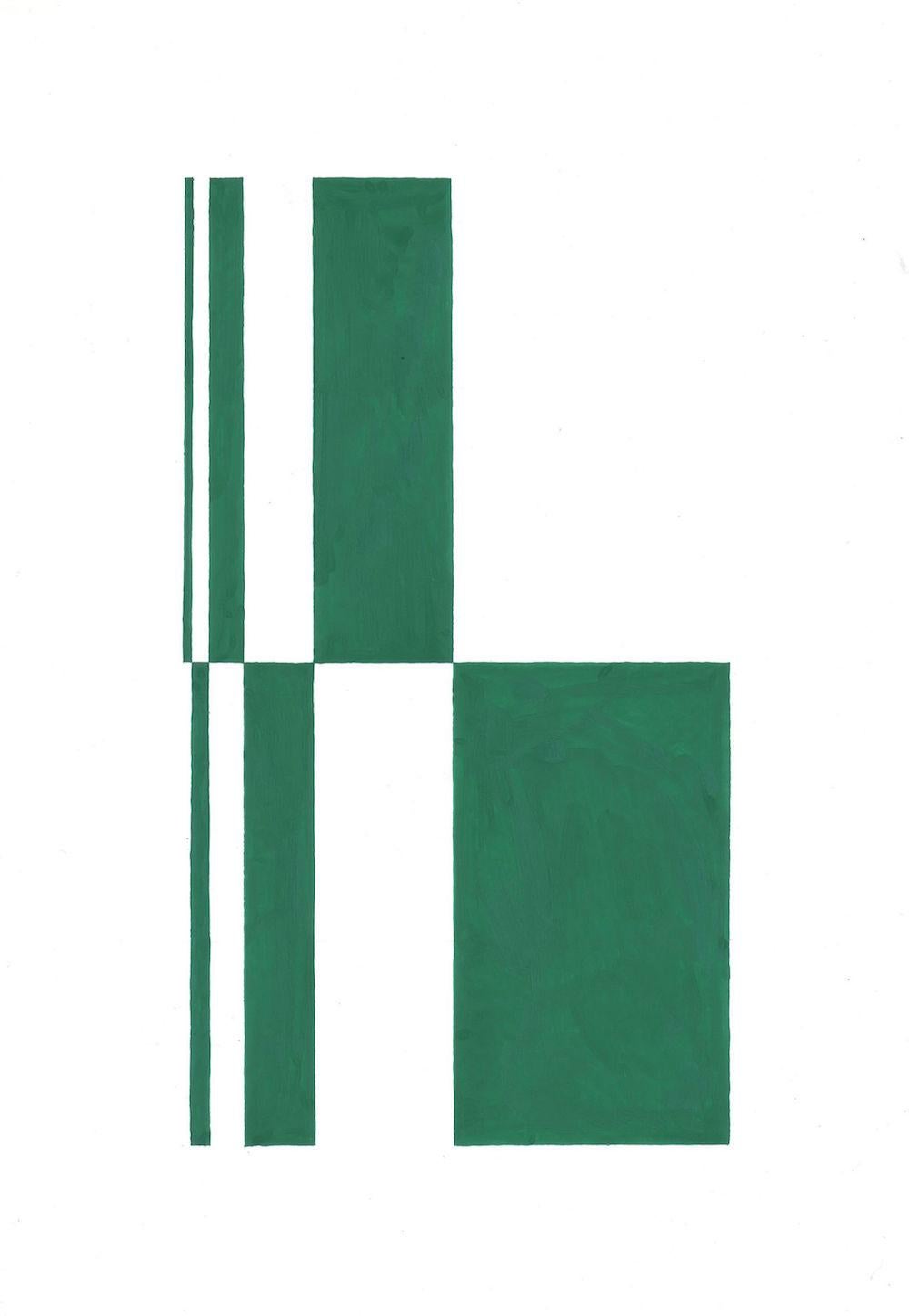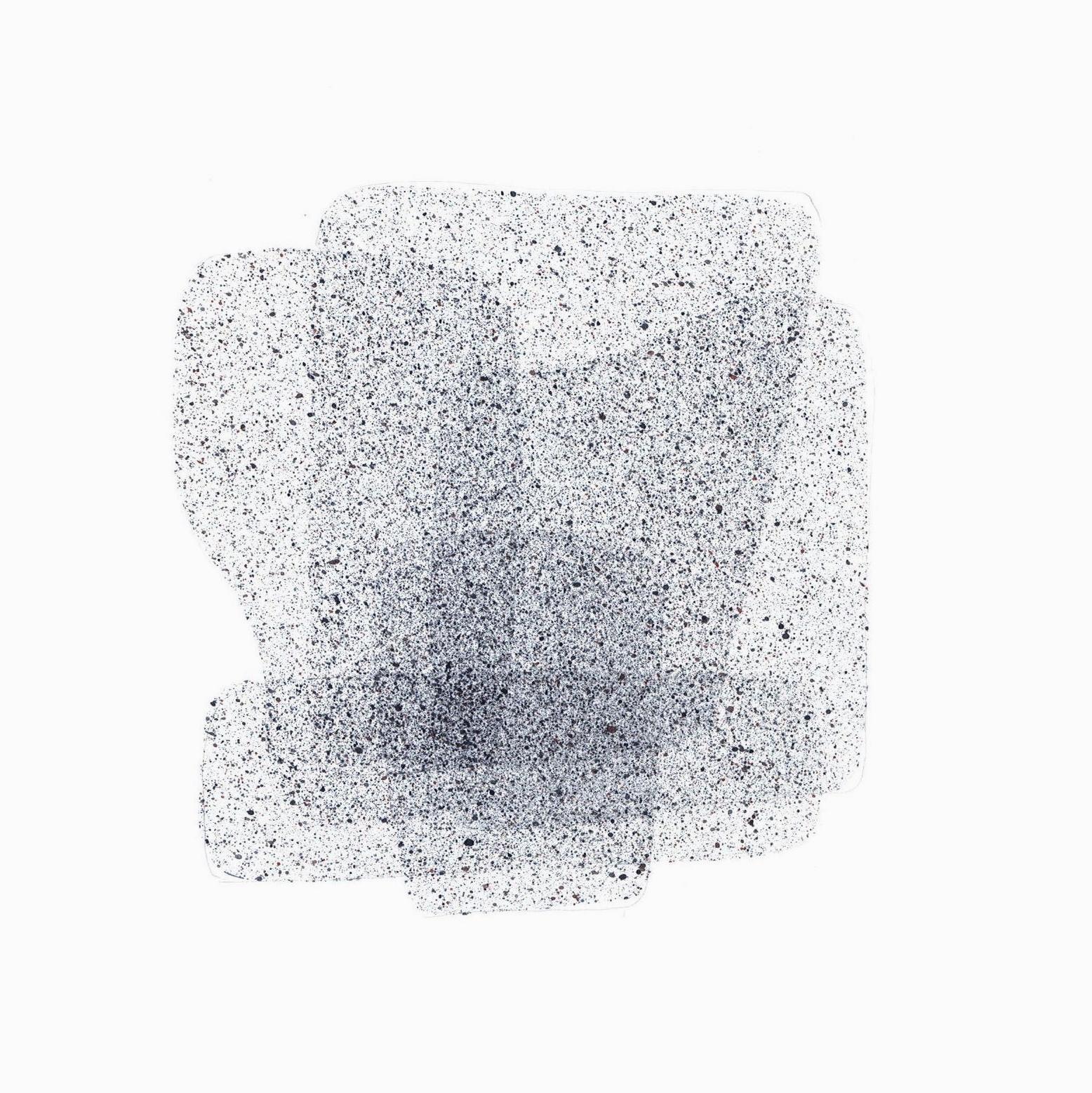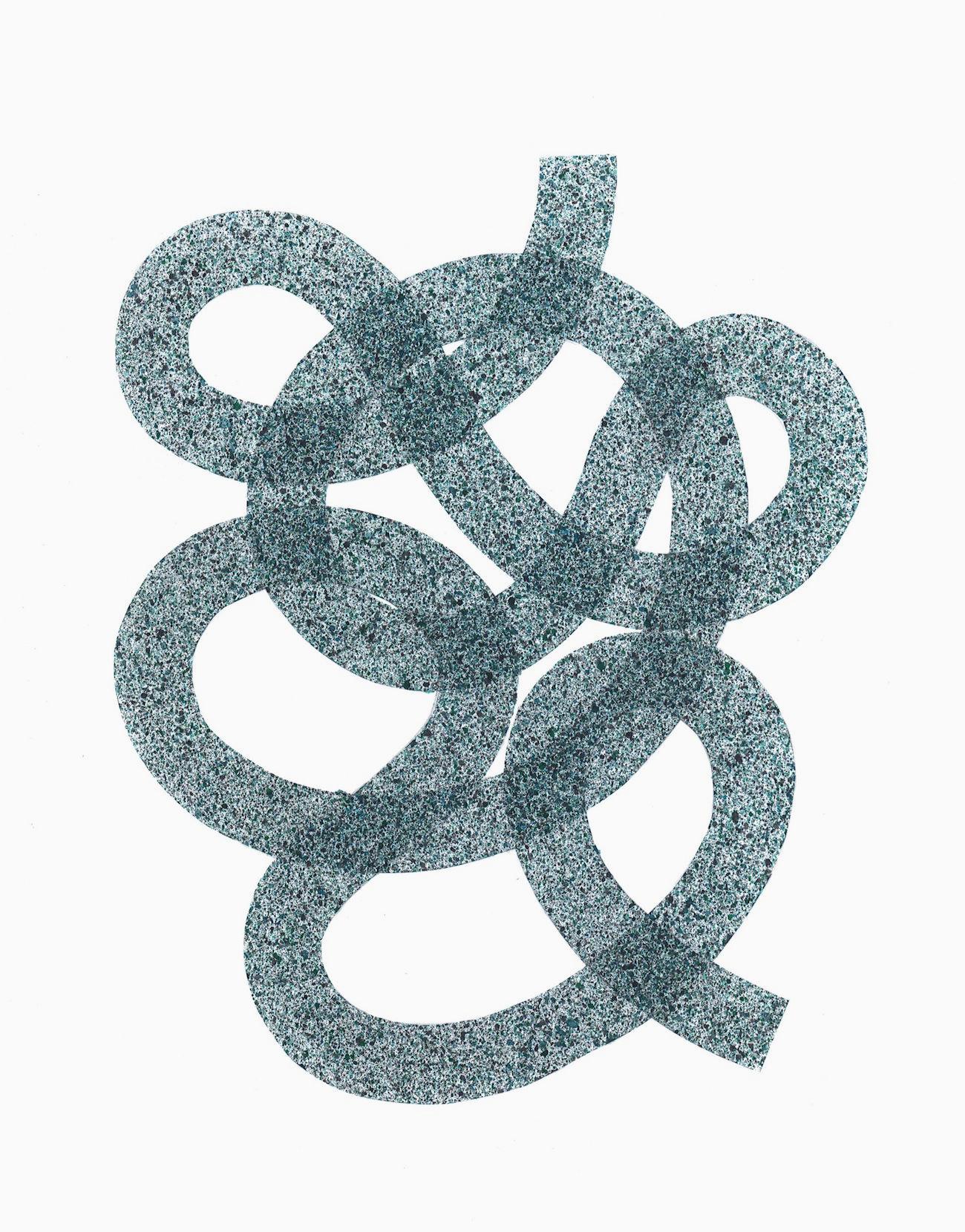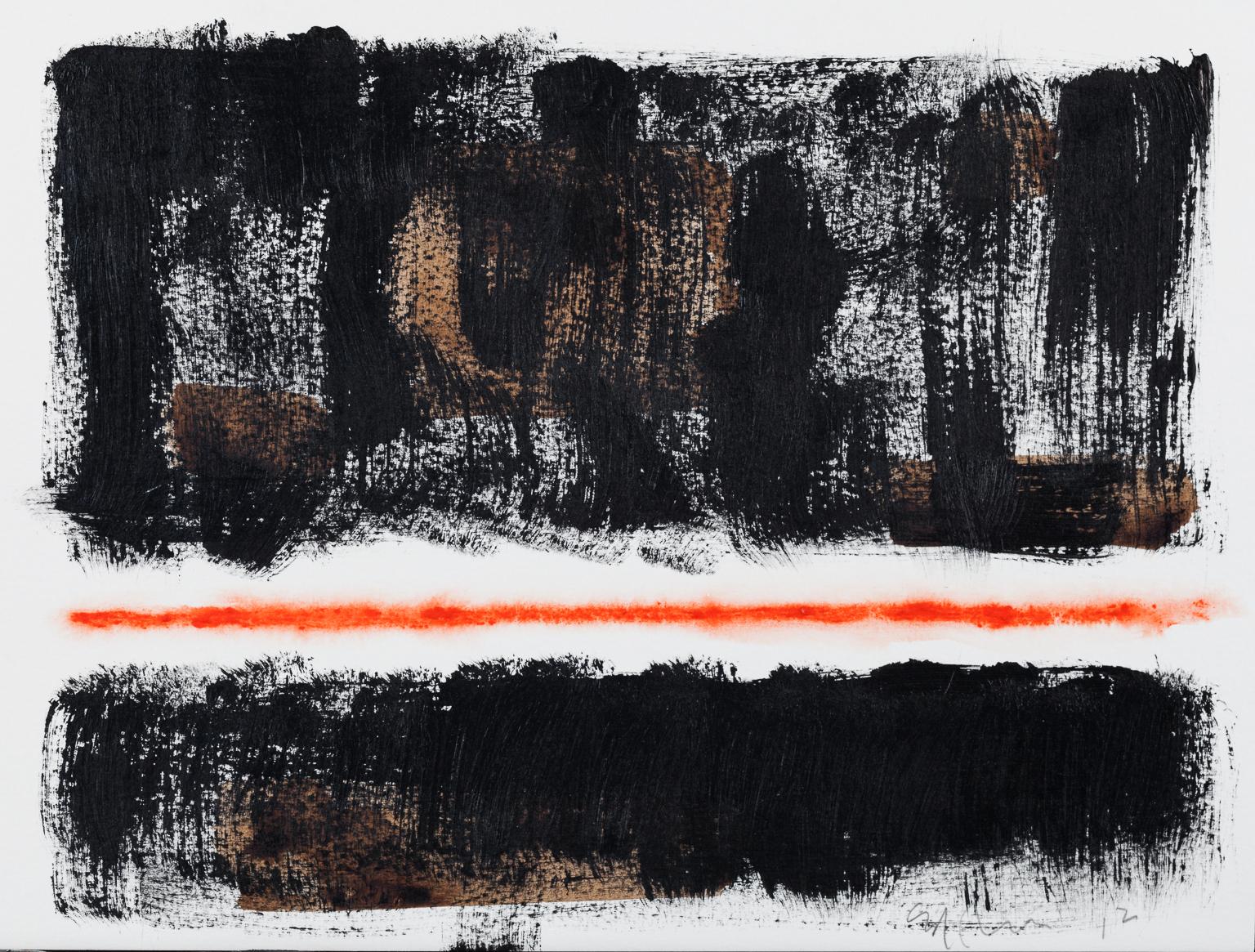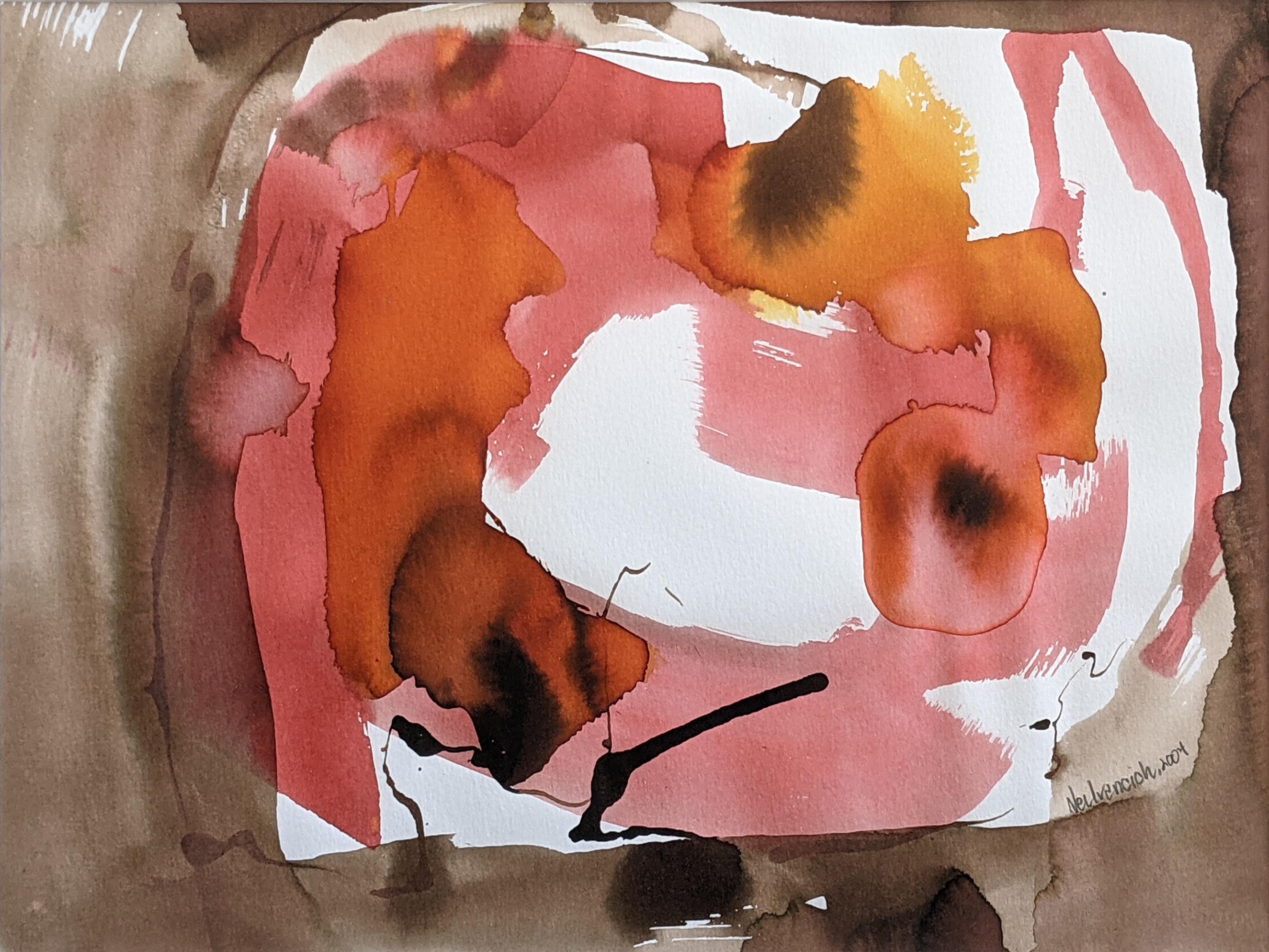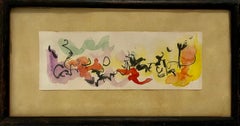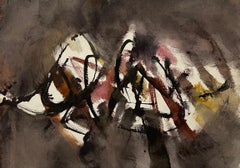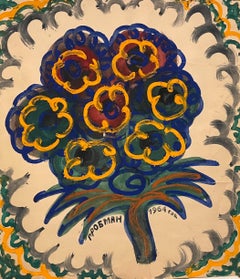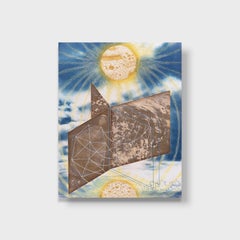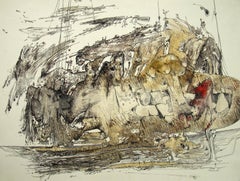
1979 Feminist Surrealist Israeli Colorful Watercolor Painting Myriam Bat Yosef
View Similar Items
Want more images or videos?
Request additional images or videos from the seller
1 of 8
Myriam Bat Yosef1979 Feminist Surrealist Israeli Colorful Watercolor Painting Myriam Bat Yosef1979
1979
About the Item
- Creator:Myriam Bat Yosef (1931)
- Creation Year:1979
- Dimensions:Height: 8.5 in (21.59 cm)Width: 11.75 in (29.85 cm)
- Medium:
- Movement & Style:
- Period:
- Condition:good. minor wear, tomning, commensurate with age. please see photos.
- Gallery Location:Surfside, FL
- Reference Number:1stDibs: LU38211852622
About the Seller
4.9
Platinum Seller
These expertly vetted sellers are 1stDibs' most experienced sellers and are rated highest by our customers.
Established in 1995
1stDibs seller since 2014
1,550 sales on 1stDibs
Typical response time: 1 hour
More From This SellerView All
- 1957 Feminist Surrealist Israeli Colorful Watercolor Painting Myriam Bat YosefLocated in Surfside, FLMyriam Bat-Yosef Surrealist abstract painting in colorful abstract shapes and shades in the style of Joan Miro Hand signed and dated Tel Aviv, 1957. frame measures 10 X 5.5 sheet measures 2.5 X 7 inches The envelope of the Peter Buch poster is just for provenance and is not included in this sale. Myriam Bat-Yosef, whose real name is Marion Hellerman, born on January 31 , 1931 in Berlin, Germany to a Jewish family from Lithuania, she is an Israeli-Icelandic artist who paints on papers, paintings, fabrics, objects and human beings for performances. Myriam Bat-Yosef currently lives and works in Paris. In 1933, her family fleeing the Nazi Holocaust, Myriam Bat-Yosef emigrates to Palestine and settles in Jaffa. In 1936, she suffers a family tragedy, her father, militant Zionist, is called to fight, still recovering from an operation of appendicitis. The incision will become infected, antibiotics did not exist yet, and her father will die in the hospital after 9 months of suffering. Myriam and her mother leave Palestine to live in Paris for three years. French is Myriam's first school language. In 1939, still fleeing Nazism, she returned to Palestine, leaving France by the last boat from Marseille. She moved to Tel Aviv with her mother, aunt and maternal grandmother. In 1940, she began attending the Academy of Fine Arts in Tel Aviv and took her name as an artist, Bat-Yosef, which means Joseph's daughter in Hebrew, as a tribute to her father. In 1946, Myriam graduated as a kindergarten teacher but wanted to be an artist. Her mother enrolled her in an evening school to prepare a diploma of art teacher. At 19, she performs two years of military service in Israel. In 1952, with a pension of $50 a month that her mother allocated, she went to study at the Beaux-Arts in Paris. To survive, she has several activities while studying. In 1955, she had her first solo exhibition, at the Israeli Club on Wagram Avenue in Paris. Many artists, such as Yaacov Agam, Yehuda Neiman Avigdor Arikha, Raffi Kaiser, Dani Karavan and sculptors Achiam and Shlomo Selinger attended the opening . In 1956, she enrolled at the School of Fine Arts in Florence. This is where she meets the painter Errô. They share an icy studio in winter. Myriam moves to Milan with friends. She organizes a joint exhibition with Erro, one room each, at the Montenapoleone gallery. Her works are admired by the sculptor Marino Marini and the painters Renato Birolli and Enrico Prampolini. Myriam and Erro exhibit in Rome, Milan, Florence and meet many personalities: Alain Jouffroy and his wife, the painter Manina, Roberto Matta and his wife Malitte, textile artist who was one of the founders of the Pompidou Center. Back in Paris, Myriam and Erro get married, which allows Myriam to avoid being called into the Israeli army during the Suez Canal War. In 1957, Myriam and her husband went to Iceland. Myriam works in a chocolate factory. Having enough money, she starts producing art again. She exhibited in Reykjavik's first art gallery. She meets the artist Sigridur Bjornsdottir, married to the Swiss painter Dieter Roth . In 1958, Myriam and her husband leave for Israel. They exhibit in Germany, then in Israel. Back in Paris, the couple became friends with artists of the surrealist movement, such as Victor Brauner, Hans Bellmer, the sculptor Philippe Hiquily, Liliane Lijn, future wife of Takis and photographer Nathalie Waag. Erro and Myriam have a daughter on March 15, 1960, named Tura, after the painter Cosmè Tura, but also close to the Icelandic Thora or the Hebrew Torah. Bat-Yosef’s complex trajectory throughout the 20th century is linked as much to the transnational history of what was for a time called the School of Paris as it is to a certain legacy of Surrealism. Her work features the same idea of resolving antinomies that also defined the spirit of surrealism, and is enhanced with her readings of the Kabbalah and her spiritual grounding in Taoism. However, while there are reasons for her approach to be associated with the process of the ready-made, it is important to consider the immediate intrication of these works with her practice of performance, during which the body itself is also painted – a feminist response to Yves Klein’s Anthropometries (1960) and an echo of the happenings which Jean-Jacques Lebel organised at the time in Paris. In 1963, Erró told Myriam that if she wants to be a painter, she can not be his wife. Myriam chose to be a painter and the couple divorced in 1964. Since that time, Myriam Bat-Yosef has exhibited in many countries: Europe, United States, Japan, etc. Although long in the shadows, the work of Myriam Bat-Yosef has been greeted by many artists and personalities: Anaïs Nin, Nancy Huston, André Pieyre of Mandiargues, José Pierre, René de Solier , Jacques Lacarrière, Alain Bosquet, Pierre Restany, Sarane Alexandrian and Surrealist André Breton who, after a visit to her studio, confided to having been intrigued by its phantasmagorical dimension. She was included in the book Pop Art and Beyond: Gender, Race, and Class in the Global Sixties by Mona Hadler and Kalliopi Minioudaki. Extract "World Citizen, Artist of the Pop Era Sarah Wilson; Why do we know so little of Myriam Bat-Yosef, the most important female Israeli artist of the Pop era? Issues of identity and sexuality feature constantly in her work. She exhibited internationally from Reykjavik to Tokyo; she had two shows at Arturo Schwarz’s famous Dada/surrealist gallery in Milan; she participated in feminist art events in Los Angeles. Above all, in 1971, she conceived Total Art, a Pop Gesamtkunstwerk inside and outside the Israel Museum, Jerusalem. Painter, performer, and installation artist, she was also a lover, wife, and mother. Of Lithuanian-Jewish descent, she was close to the family of philosopher Emmanuel Levinas. An émigré in Paris she would repudiate a national passport, participating in Garry Davis’s short-lived “World Citizens” movement. She continues the lineage of women surrealist artists: Valentine Hugo, Leonor Fini, Dorothea Tanning, Leonora Carrington, Unica Zürn, Jane Graverol, Toyen, Alice Rahon...Category
1950s Surrealist Abstract Paintings
MaterialsWatercolor
- Modernist Abstract Expressionist Watercolor Painting Bauhaus Weimar ArtistBy Pawel KontnyLocated in Surfside, FLAbstract watercolor composition bearing the influence of the earlier color-block compositions of Paul Klee. Pawel August Kontny, (Polish-German-American artist) He was born in Laurahuette, Poland, in 1923, the son of a wealthy pastry shop owner. In 1939 he began studying architecture in Breslau where he was introduced to the European masters and to the work of some of the German Expressionists, soon afterward banned as "degenerate artists" and removed from museums throughout Germany by the Nazi regime. His studies were interrupted by World War II. Drafted into the German army, traveling in many countries as a soldier, he sketched various landscapes but in 1945, he was captured and held as a prisoner of war in Italy. After the war, he studied at the Union of Nuremberg Architects to help design buildings to replace ones destroyed in the war. He recorded his impressions of the local population and the landscapes through his watercolors and drawings. Pawel Kontny thereafter moved to Nuremberg, Germany, becoming a member of the Union of Nuremberg Architects and helping to rebuild the city's historic center. He soon decided to concentrate on his professional art career. He married Irmgard Laurer, a dancer with the Nuremberg Opera. Pavel Kontny 's career as an artist was launched with his participation in an all German exhibition, held at the Dusseldorf Museum in 1952. He held one-man shows in Germany, Switzerland and the United States. During his trip to the United States in 1960, Kontny became instantly enamored with Colorado, and decided to relocate to Cherry Hills with his wife and two children. He quickly established himself in the local art community, being affiliated for a time with Denver Art Galleries and Saks Galleries. His subject matter became the Southwest. During this time he received the Prestigious Gold Medal of the Art Academy of Rome. His extensive travel provided material for the paintings he did using his hallmark marble dust technique. he also worked equally in pastel, watercolor, charcoal and pencil-and-ink. in a style which merged abstraction and realist styles, influenced by Abstract Expressionist painting and South Western American landscapes. In the early 1960s he was one of only a few European-born professional artists in the state, a select group that included Herbert Bayer (1900-1985), a member of the prewar Bauhaus in Weimar and Dessau, Germany, and Roland Detre (1903-2001), a Hungarian modernist painter. As a Denver, Colorado resident, Pavel Kontny exhibited at galleries and museums throughout the United States, Germany and Japan. There, he was inspired by frequent trips to Native American pueblos in the Southwest, as well as by the study of the Plains Indians of Montana and Wyoming. Over the years Kontny had a number of students and generously helped young artist by hosting exhibitions at his Cherry Hills home. For many years he generously donated his paintings to support charitable causes in Denver. Influences during his European years included German pastelist C.O. Muller, German Informel painter Karl Dahmen and Swiss artist, Hans Erni. In the early 1950s his painting style showed the influence of the Die Brücke (The Bridge), a group of German expressionist artists formed in Dresden in 1905 who had a major impact on the evolution of modern art in the twentieth century in Germany. By the middle of the decade his style incorporated more referential abstraction and total abstraction, resulting in part from his study of Hans Hartung, a German artist based in Paris who exhibited his gestural abstract work in Germany. His work also bears the influence of Sam Francis. The American moon landing in 1969 inspired Paul Kontny...Category
Mid-20th Century American Modern Abstract Drawings and Watercolors
MaterialsWatercolor, Archival Paper
- Post Soviet Nonconformist Avant Garde Russian Israeli Gouache Painting GrobmanBy Michail GrobmanLocated in Surfside, FLMIchail Grobman Gouache and watercolor on paper Hand signed Lower Left and Dated 1964. Described inn Cyrillic Russian verso. Dimensions: L:13.25" W: 11.75". Michail Grobman (Russian: Михаил Гробман, Hebrew: מיכאיל גרובמן, born 1939) is an artist and a poet working in Israel and Russia. He is father to Hollywood producer Lati Grobman and Israeli architect Yasha Jacob Grobman. Biography 1939 – Born in Moscow. 1960s – Active member of The Second Russian Avant-Garde movement in the Soviet Union. 1967 – Member of Moscow Artists Union. 1971 – Emigrates to Israel and settles in Jerusalem. 1975 – Founded the Leviathan group and art periodical (in Russian). Since 1983, he lives and works mainly in Tel Aviv. Awards In 2001, Grobman was a co-recipient of the Dizengoff Prize for Painting. Solo exhibitions 2007 – Last Skies, Loushy & Peter Art & Projects, Tel Aviv (cat. text: Marc Scheps) 2006 – Creation From Chaos to Cosmos, Bar-David Museum of Fine Art and Judaica, Kibbutz Baram (cat. text: Sorin Heller) 2002 – The Last Sky, installation, Tsveta Zuzoritch pavilion, Belgrad (cat. text: Irina Subotitch) 1999 – Mikhail Grobman: Works 1960–1998, The State Russian Museum, St. Petersburg (cat. texts: Evgeniya Petrova, Marc Scheps, Lola Kantor-Kazovsky, Michail German) Michail Grobman was born in Moscow. He grew up writing poetry, essays and literary prose. In the 1960s, he was active in the Second Russian Avant-garde movement in the Soviet Union. In 1971, he immigrated to Israel. In 1975, he established the Leviathan school together with Avraham Ofek and Shmuel Ackerman, seeking to combine symbolism, metaphysics and Judaism in an all-inclusive “national style.” Grobman’s lithograph work employs images and symbols from Jewish mysticism and Kabbalah. His paintings incorporate texts in Russian and Hebrew. In addition to his artistic endeavors, he writes about art and aesthetics. The group combined conceptual art and "land art" with Jewish symbolism. Of the three of them Avraham Ofek had the deepest interest in sculpture and its relationship to religious symbolism and images. In one series of his works Ofek used mirrors to project Hebrew letters, words with religious or cabbalistic significance, and other images onto soil or man-made structures. In his work "Letters of Light" (1979), for example, the letters were projected onto people and fabrics and the soil of the Judean Desert. In another work Ofek screened the words "America", "Africa", and "Green card" on the walls of the Tel Hai courtyard during a symposium on sculpture Part of the generation of emigre Russian artists, many Jewish, that included Yuri Kuper, Komar and Melamid, Eduard Steinberg, Erik Bulatov, Viktor Pivovarov, Vladimir Yankilevsky, Ilya Kabakov and Grisha Bruskin. Date of Birth: 1939, Moscow 1960s Active member of The Second Russian Avant Garde 1967 Member of the Moscow Painters Association 1971 Immigrated to Israel and settled in Jerusalem 1975 Founded the Leviathan group and art periodical (in Russian) Since 1983 Lives and works in Tel Aviv . Selected Solo Exhibitions: 2002 Pavilion Zveta Zuzovich, "The Last Sky", Belgrad (cat: Irena Subotitch) 1999 The State Russian Museum, ST. Petersburg 1998 "Picture = Symbol + Concept", Herzliya Museum of Art, Herzliya 1995 "Password and Image", University Gallery, Haifa University 1990 Tova Osman Gallery, Tel Aviv 1989 "The Beautiful Sixties in Moscow", The Genia Schreiber University Art Gallery, Tel Aviv University (with llya Kabakov; cat. text: Mordechai Omer] Spertus Museum, Chicago Beit Rami and Uri Nechushtan, Ashdot Yaacov (leaflet) 1972 Nora Gallery, Jerusalem 1973 - Negev Museum, Beer Sheva 1971 Tel Aviv Museum of Art (cat. text: Haim Gamzu) 1966 Mos-lng-Projekt, Moscow 1965 Artist's House, Moscow Energy Institute, Moscow History Institute, Moscow Usti-nad-Orlicy Theatre,Czechoslovakia (leaflet text: Dushan Konetchni) 1959 Mukhina Art Institute, Leningrad . Selected Group Exhibitions: 2003 "Yes do yourself...", Regeneration of Judaism in Israeli art, Zman Omanut Tel Aviv (cat: Gideon Ofrat) 1999 "Russian post-war avantgarde", The Trajsman Collection in the State Russian Museum, St. Petersburg Tretjakov National Gallery, Moscow (cat. text: Yevgenij Barabanov, John Bolt...Category
1960s Modern Abstract Paintings
MaterialsPaper, Watercolor, Gouache
- Abstract Color Field Gradient Painting California Minimalism Shingo FrancisBy Shingo FrancisLocated in Surfside, FLFrancis, Shingo (Japanese/American, born 1969), W3 , 1999 Encaustic and watercolor painting on Arches paper, 23.5 x 22.5 inches, Hand signed and dated verso Provenance: Garner Tullis Workshop Shingo Francis is a painter, drawer and photographer who employs a minimal and abstract approach in his work, exploring color, time and space. This was done at Garner Tullis workshop. Francis was born in Santa Monica, California in 1969. At the age of three he moved to Japan with his Japanese mother, and went to an international school in Tokyo until the age of thirteen. He subsequently moved back to California to live with his father, the Abstract Expressionist artist Sam Francis during the academic year, spending the summer and winter breaks in Tokyo. Francis received degree Bachelor of Arts degree in 1992 from Pitzer College in Claremont, California. In 2001, he moved his studio from Los Angeles...Category
1990s Abstract Abstract Paintings
MaterialsEncaustic, Watercolor, Archival Paper
- Abstract Color Field Gradient Painting California Minimalism Shingo FrancisBy Shingo FrancisLocated in Surfside, FLFrancis, Shingo (Japanese/American, born 1969), W3 , 1999 Encaustic and watercolor painting on Arches paper, 23.5 x 22.5 inches, Hand signed and dated verso Provenance: Garner Tullis Workshop Shingo Francis is a painter, drawer and photographer who employs a minimal and abstract approach in his work, exploring color, time and space. This was done at Garner Tullis workshop. Francis was born in Santa Monica, California in 1969. At the age of three he moved to Japan with his Japanese mother, and went to an international school in Tokyo until the age of thirteen. He subsequently moved back to California to live with his father, the Abstract Expressionist artist Sam Francis during the academic year, spending the summer and winter breaks in Tokyo. Francis received degree Bachelor of Arts degree in 1992 from Pitzer College in Claremont, California. In 2001, he moved his studio from Los Angeles...Category
1990s Abstract Abstract Paintings
MaterialsEncaustic, Watercolor, Archival Paper
- Abstract Color Field Gradient Painting California Minimalism Shingo FrancisBy Shingo FrancisLocated in Surfside, FLFrancis, Shingo (Japanese/American, born 1969), W3 , 1999 Encaustic and watercolor painting on Arches paper, 23.5 x 22.5 inches, Hand signed and dated verso Provenance: Garner T...Category
1990s Abstract Abstract Paintings
MaterialsEncaustic, Watercolor, Archival Paper
You May Also Like
- A Surreal Bleach Toned Traditional Watercolor Cyanotype, "Nimble Articulation"Located in San Diego, CAA one of a kind 8" x 10" Surreal Bleached and Toned Traditional Watercolor Cyanotype executed on Hahnemuhle Platinum Rag Paper by artist Annalise Neil. A certificate of authenticity ...Category
2010s Surrealist Abstract Paintings
MaterialsPhotographic Paper, Watercolor
- "Study for Ladders" Juanita Guccione, Abstract Surrealism, Female ArtistLocated in New York, NYJuanita Guccione (1904 - 1999) Study for Ladders, 1948 Gouache on paper 17 x 13 inches Signed lower left, dated, and inscribed “Study for Oil Painting...Category
1940s Surrealist Abstract Paintings
MaterialsPaper, Gouache
$18,750 Sale Price25% Off - Hodel Fantastic Surrealist Oil Painting Monotype Switzerland Signed 1969Located in Meinisberg, CHHodel (Swiss, 20th Century) Fantastic Surrealist Painting • Extensively overworked monotype on stiff paper • Mixed media - Ink, oil and/or gouache on stiff paper • Signed ' HODEL' ...Category
1960s Surrealist Abstract Paintings
MaterialsPaper, Ink, Oil, Gouache
- Untitled Concert Hall painting Mid Century Surrealistic spiritual unique signedLocated in New York, NYAgatha Wojciechowsky Untitled Concert Hall Abstraction Watercolor, 1964 Watercolor on thick wove paper (with original label from Cordier & Ekstrom...Category
Mid-20th Century Surrealist Abstract Drawings and Watercolors
MaterialsWatercolor, Mixed Media
- Surrealist Painting Royal College of Art LGBTQ+ Women artist Chicken LoveBy Isabel RockLocated in Norfolk, GBIsabel Rock is a creator of contemporary fairy tales. A graduate of the Royal College of Art in London, her work is an explosion of strange occurrences while a surreal narrative take...Category
2010s Surrealist Abstract Paintings
MaterialsPaint, Mixed Media, Acrylic, Archival Paper, Pen
- Surrealist Painting Royal College of Art LGBTQ+ artist Blue Fountain Pink PoodleBy Isabel RockLocated in Norfolk, GBIsabel Rock is a creator of contemporary fairy tales. A graduate of the Royal College of Art in London, her work is an explosion of strange occurrences while a surreal narrative takes the audience on a journey into the imagination. In October 2023 Isabel won the Evelyn Williams Drawing Award at the Trinity Buoy Wharf Drawing Prize. Known as the UK’s most prestigious annual open exhibition for drawing; part of the prize is a solo show at Hastings Contemporary, scheduled for 2024. Whilst Isabel always has a tale to tell for each of her images, you may or may not choose to go on the journey with her or you may indeed have a different story, one of your own that jumps off the page at you and you decide to follow. Artwork Details: Isabel Rock , 'Just another Day in Paradise', mixed media on best archival paper, 85cm x 140cm, unframed, 2022 In Rock's own words, 'It was just another day in Paradise for the Pink Poodle People of the Everlasting Fountain of Eternal Joy. Since every day was Paradise it was just another normal day filled with love, ecstasy and wonder. It started slowly at first, things began to appear in paradise, strange objects that the Pink Poodle People did not know what to do with. Some had sharp edges, others were so and smelt strange, bad strange. Some things glittered and shone. Every day more of these objects would arrive in Paradise. ' If this happens every day then soon Paradise will be full of these strange objects. Some of them are nice but many are bad and smelly. One day there will be no Paradise, only bad, sharp and smelly things.' But the Pink Poodle People did not know what to do with the objects and every day more arrived.' Artwork Provenance: from the Artist Studio A certificate of authentication comes from Gallery Art 1821 photo credits, Isabel working, black and white shots, James Brown About Isabel Rock and her work: Taking inspiration from Japanese woodblock prints and Indian miniature painting Rock has developed a unique collage technique that combines bold structures with large-scale woodblock prints and intricate detailing. The subject is a grand mixture of humour, drama, hidden morals, fanciful characters, modern culture, mythical beings and fantastical situations. Rock creates a world that pulls you in and demands your attention. Quality of line is paramount, the drawings are created using a dipping pen and acrylic ink. An essential tool is a squirrel...Category
2010s Surrealist Abstract Paintings
MaterialsPaint, Mixed Media, Archival Paper, Pen
Recently Viewed
View AllMore Ways To Browse
Made In 1979
Paintings Israel
Painting Of Israel
1979 Pictures
Israeli Artists Painting
Paris Surrealist
Israel Museum
Surrealist Design
Israel Abstract Painting
Painting Frankfurt
Colorful Women
Bat Used
Israeli Modern Paintings
Bates And Bates
Colorful Art Women
Copenhagen Painting
Philosopher Painting
Paintings Of Philosophers

